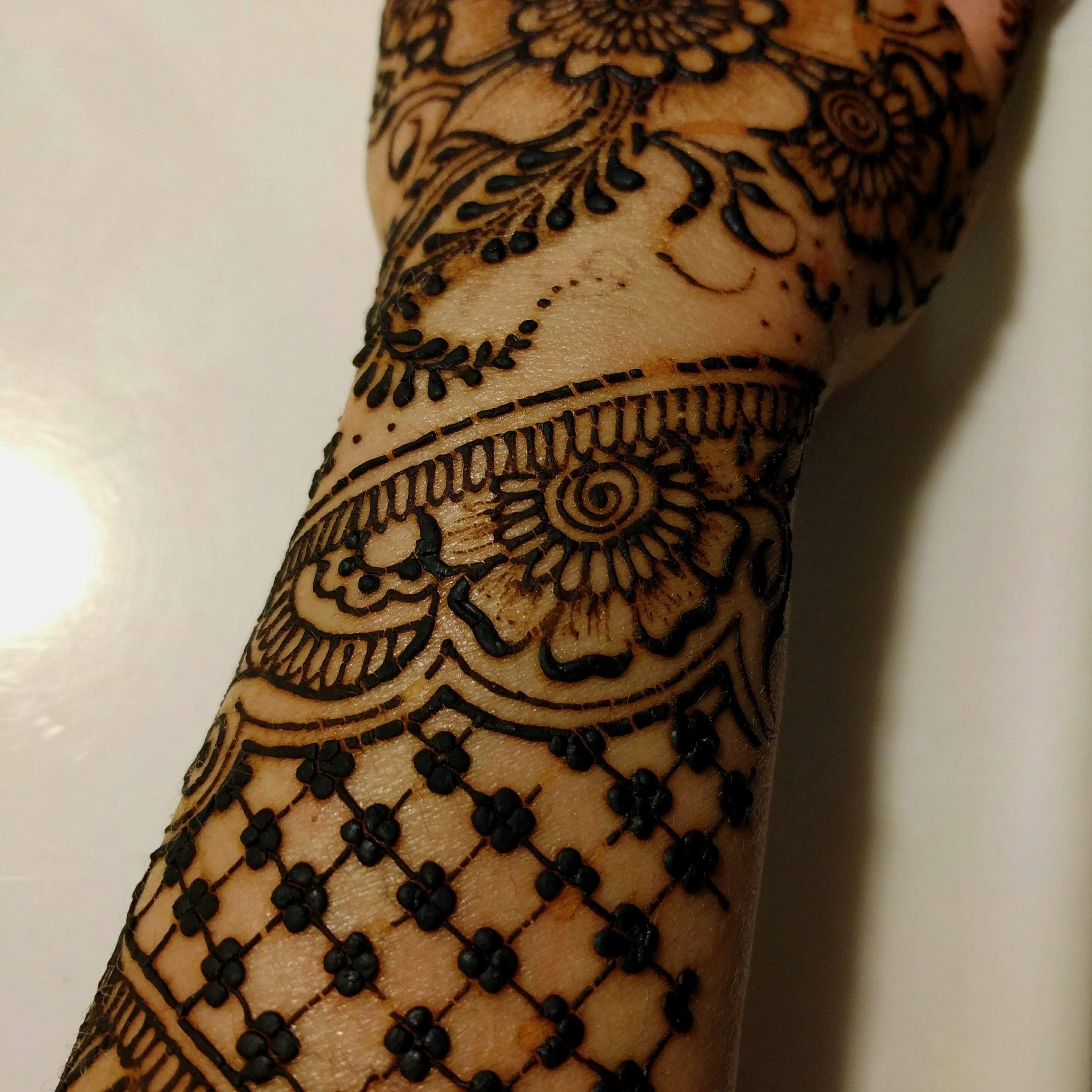Recommended Henna aftercare
There’s a lot YOU can do to ensure that you get the best stain possible! Please follow these aftercare steps to ensure that you get a great stain.
Paste on
The paste will take 10-20 minutes to dry, please be careful not to smudge your henna at this time! You will want to keep your paste on for as long as possible, ideally 4-8 hours, but even a short time will produce a light stain.
As your skin moves, you may notice some cracking or flaking. You can apply sugar sealant to help keep your henna moist and flexible. (2:1 water or lemon juice:sugar)
Allow your henna to crumble off on it’s own or you can scrape it off with a flat edge like a credit card. If it is difficult to remove the paste due to sealant, you can apply some coconut or similar oil to soften the paste. Please avoid using water to wash your paste away.
Fresh Stain
When the paste is initially removed, your stain will look bright to pale orange. DO NOT PANIC. The stain will need to oxidize and darken over the next 24-48 hours. Please limit contact with water the best you can during this period. If you need to be in contact with water, you can apply a balm or oil to create a waterproof barrier that will help protect your stain.
Mature stain
Your mature stain will be in full bloom approximately 2-3 days after your application. Remember, henna stains are permanent, your skin is not! Anything you can do to avoid exfoliation will help with the life of your stain. Keeping your skin moisturized and your body hydrated are important factors, as well as avoiding scrubbing and long soaks in water. If you are reaching the end of the life of your stain, you can do the opposite to remove the last little “freckles” of stain. Take a soak in a hot tub and break out the sugar scrubs!
Henna Safety
I know that I’m not the only henna artist out there that you may be getting henna from. That’s okay! But please keep in mind that HENNA IS NEVER BLACK! “Black henna” (refers to the color of the stain) contains a synthetic additive called Para-phenylenediamine (PPD) which is not approved for use on skin by the FDA and is illegal to use on skin in the US and many other countries. It is carcinogenic and is a linked to a number of health issues. The most common being dermal reactions such as itching, burning, blistering, and scaring (pictured to the right from Massachusetts Medical Society). Some people may not have visible reactions after the first few uses, but it is a sensitizing chemical and most people, with enough exposure, will experience unpleasant physical reactions. All people exposed to “black henna” will experience internal organ damage.
Additionally, I do not recommend using shelf stable, pre-made cones. If henna is truly all natural, it must be refrigerated or frozen to maintain it’s ability to stain and to prevent the paste from separating. These commercially produced cones claim “natural” but do not include ingredients lists and are often laced with preservatives and industrial dyes in order to create shortcuts, many of which do not meet FDA standards for use on skin. Always mix your paste from pure henna powder or buy paste directly from an artist who will tell you their exact recipe.



